The Colony of the Cape of Good Hope became the first country in the world to pass legislation for the registration of nurses and midwives in 1891. Significant developments in nursing have usually been achieved through the vision and unwavering commitment of a strong leader, and in the case of state registration for nurses, this person was Sr. Henrietta Stockdale. At that time, nurses throughout the world hailed the achievement as a breakthrough for the nursing profession, but today few nurses have heard of this nursing pioneer.
Why is registration, or licensing, through state law so important? When the training of nurses first started, every hospital would have its curriculum and length of training and employers, as well as the public, had to judge the ability of the nurse on the reputation of a particular hospital’s training. Also, anyone could compete for a nursing job, whether she had any training or not. State registration, or licensing, places nursing on a professional footing. It provides the nurse with an acknowledged status within society; it confirms that the nurse has met a certain standard of education; it safeguards the public against those who have not completed training, and there is control to ensure that those in the profession maintain the standards.
Who was Sr. Henrietta Stockdale?
The young Henrietta was born in 1847 in Nottinghamshire, England. She was the daughter of an Anglican clergyman who served mainly in small villages. The family was never well-off, and the children’s primary education was mostly in the hands of their father. However, from a young age, it showed that Henrietta was a highly intelligent and thoughtful child with a commanding presence. There were no formal educational opportunities, and Henrietta was largely self-educated by reading as much as she could lay her hands on.
Early Missionary Call
When Henrietta was 15 years old, she was at a meeting with the Bishop of the Orange River Mission in South Africa and was so impressed by its work that she immediately joined as an associate of the mission. “From that time, when she was only fifteen, until her death nearly fifty years afterward, she gave her prayers, her thoughts, her time, and finally herself to the Bloemfontein Mission, and died in its cause.”
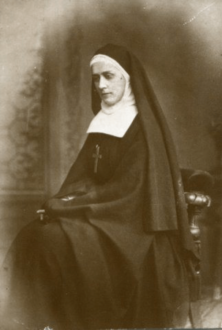
She eventually realized her dream of joining the mission field in 1874 as an associate of the Order of St Michael and All Angels, the first order to be newly established on South African soil. When asked by a family member before leaving if she would become a religious sister her reply was: “I think not; you see I may live sixty years longer.” She did, in the end, take her vows a few years later in 1877.
Start of Her Nursing Career
Before sailing for South Africa, Henrietta completed a few months of training as a nurse at the Clewer Hospital and at the Great Ormond Street Hospital for children. After arriving in Bloemfontein, she was engaged in teaching but longed to help the sick. The opportunity came in 1877 when the order was approached to provide nursing services in the diamond fields of Kimberley, the El Dorado of diamonds. Here, over 30,000 people had gathered over a short period in a dangerous, hot and dusty landscape, where many suffered considerable illness and poverty.
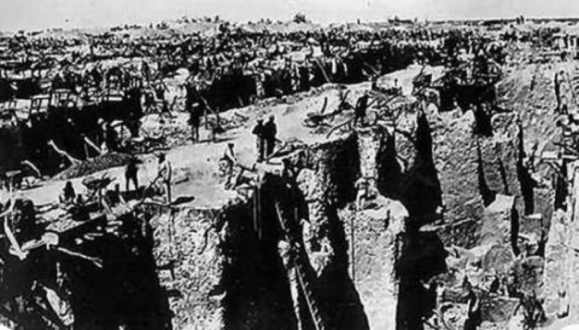
A group from the Order took over the nursing at the wood and iron hospital but Sr. Henrietta was soon asked to do district work. She stayed in the tents and shacks of the diggers’ camp, working long hours until she was infected with camp fever (Typhoid). She was sent back to England to recover, and during this time she spent some months at the University College Hospital in London to get more nursing experience and also to gather information on the training of nurses.
Carnarvon Hospital in Kimberley
In 1879, Sr. Henrietta was put in charge of Carnarvon Hospital in Kimberley (later Kimberley Hospital), and here she began the work to which the rest of her life was devoted.
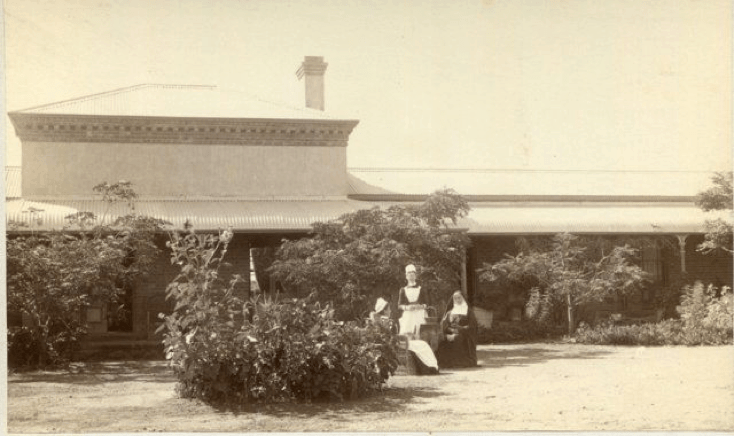
Sr. Henrietta cared deeply for those she was responsible for. She told her nurses that cheerfulness would “do more good to their patients than a dose of medicine,” and during her rounds greeted and asked after the welfare of each and every patient. When asked whether nurses also helped the patients’ souls her reply was “Why, yes, or we might just as well nurse a lot of broken-down old horses.”
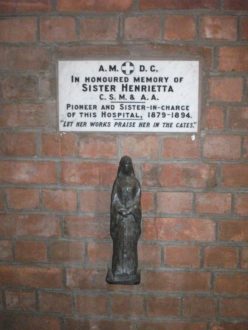
The needs of the nurses, who were overworked in tough conditions, were also of great concern to Sr. Henrietta. She advocated and collected funds for building a proper nurses’ residence and arranged shifts in such a way that there was time for rest, recreation, exercise and time to worship.
Founding Professional Nursing Education in South Africa
Sr. Henrietta introduced the first professional training of nurses in South Africa at Carnarvon hospital. At first, the training was two years, but by 1889 the school became one of the forerunners in establishing three years of training as advocated at the time by the British Nursing Association (BNA). Similar to the Nightingale trained nurses in England, the Kimberly trained nurses were in high demand and took charge of hospitals and established nurse training schools throughout South Africa.
Advocating for State Registration of Nurses
Sr. Henrietta had a close friend and mentor in Bedford Fenwick, the nursing leader who launched the BNA in 1887 with the primary objective of achieving recognition of the nursing profession in law. Sr. Henrietta joined the BNA and actively supported its aims. She became aware that the legislation for medical practitioners was under review and immediately launched a campaign to have nurses and midwives included in this law. Through her strong personality, and what is described as her quiet diplomacy, she convinced nurses, medical and political leaders of the need for legislation to regulate the nursing profession and gained their support. In 1891 the Act was passed to make provision for the Licensing and Registration of Medical Practitioners, Apothecaries, Dentists, Chemists and Druggists, Midwives and Nurses.
“…South Africa became the first country in the world to make legal provision for the curriculum for nurses and midwives, approval of training schools, as well as standardized examinations for entry into the register.”
Thus South Africa became the first country in the world to make legal provision for the curriculum for nurses and midwives, approval of training schools, as well as standardized examinations for entry into the register.
Founder Member of the ICN
In her book on the history of nursing, published in 1920, Lavinia Dock wrote: “Sister Henrietta was a woman of fine culture and seriousness of character. Her personality made a deep impression on nurses, when, at international meetings in England in 1899, she told of the steps by which they had gained what was then so great a novelty, the first state recognition of the profession of nursing.”
Sr. Henrietta was an honorary member of the Matrons’ Council of Great Britain and Ireland where, during its meeting in 1899, the International Council of Nurses was founded. The aim of this body was to serve as an international platform for nurses from various countries who were advocating for professional self-government. Sr. Henrietta was amongst those elected to the provisional committee that was responsible for drafting the constitution of the ICN.
Recognition
Sr. Henrietta collected funds for a chapel at the hospital which was inaugurated in 1887. This chapel, later named after Sr. Henrietta, still stands at Kimberly Hospital and is an official heritage site.
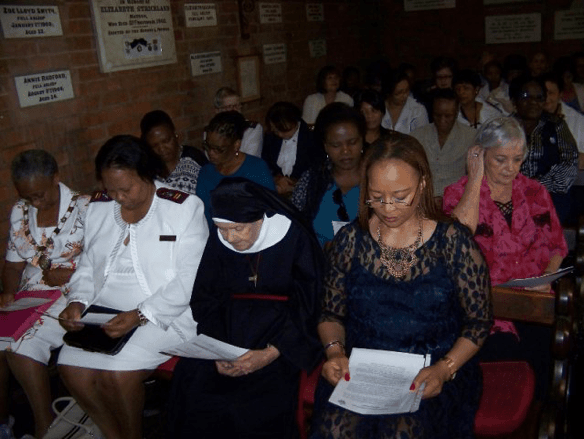
In 1970, the then South African Nursing Association funded a statue in honor of Sr. Henrietta. It was sculpted by Dr. Jack Penn, an internationally famous plastic surgeon, and well-known sculptor.

The statue stands in the grounds of the St Cyprian’s Cathedral in Kimberley and is one of the very few statues in the world honoring the work of religious sisters.

please send me the email adress